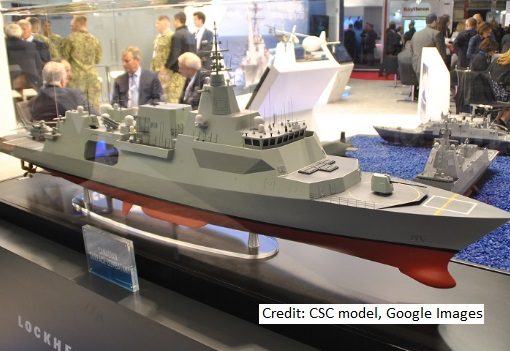What we heard on Wednesday (October 19th) was that the shipyards - Irving in Halifax and Seaspan in Vancouver - have received or are about to receive contracts worth of the order of $25-30 billion (for Irving) and $8-10 billion (for Seaspan). Neither is quite correct - not yet, but wait.
My understanding of the process is that what has actually happened is both shipyards have been selected by the government to build ships, and the next step is that the government and the shipyards will sign “umbrella agreements.” Once the umbrella agreements are in place, the government will, over time, ask the shipyards to prepare detailed proposals to actually build the respective ships - Irving for the combat ships (for the navy, of course) and Seaspan for the non-combat ships (some for the navy and some for the coast guard) - and once the proposals have been received, contracts will be negotiated. So, why does one shipyard seem to get $25-30 billion and the other only $8-10 billion?
I would expect the ships to be built by Seaspan will be built almost entirely by them (and their partners and suppliers). On the other hand, I would expect most of the ships to be built by Irving will probably be built by Irving working with a ‘to be determined’ combat system contractor or integrator (Irving would build the physical ships - the hulls, outfitted with electrical and propulsion plants, etc - but the ‘other contractor’ would supply the combat portion of the ships - the sonar and radar systems, the weapon systems, radio communications, and command and control systems), or could maybe even be the prime contractor. And this ‘combat portion’ of the ships will account for a substantial portion of the overall ship cost.
Thus, from simply a ‘cutting steel’ point of view - the construction work actually to be done by both Irving and Seaspan - will be somewhat closer in dollar value than what’s been indicated by the media. In addition, based on the government’s current schedule to build the ships, the ships to be built by Seaspan should be completed in about eight years (after work begins). The first six ships to be built by Irving could also expected to be built in this timeframe, but the remaining ships might not be started for perhaps eight to ten years from now and they could be built over a 12 to 15 year period. In the meantime, as the Canadian Coast Guard recapitalizes its fleet, it is expected they could have more ships built under the program - and these (if over 1,000 tonnes - like a second ice-breaker) would be expected to be built by Seaspan.
Thus, what might appear to be lopsided - based on the initial media reports - is not quite that lopsided as the actual benefits to both shipyards in terms of jobs in the shipyards and money that stays in the shipyards will be somewhat similar. Since these are the first major shipbuilding programs to be offered to a west coast company since the navy’s last ships commissioned there in the early-1960s (HMC Ships Saskatchewan and Yukon), it is a huge ‘coup’ for Seaspan and for all of B.C. Similarly, it brings naval ship construction back to Nova Scotia (apart from the Maritime Coastal Defence Vessels built by Irving in the 1990s); the last major naval ship built there was HMCS Annapolis in the mid-1960s.


